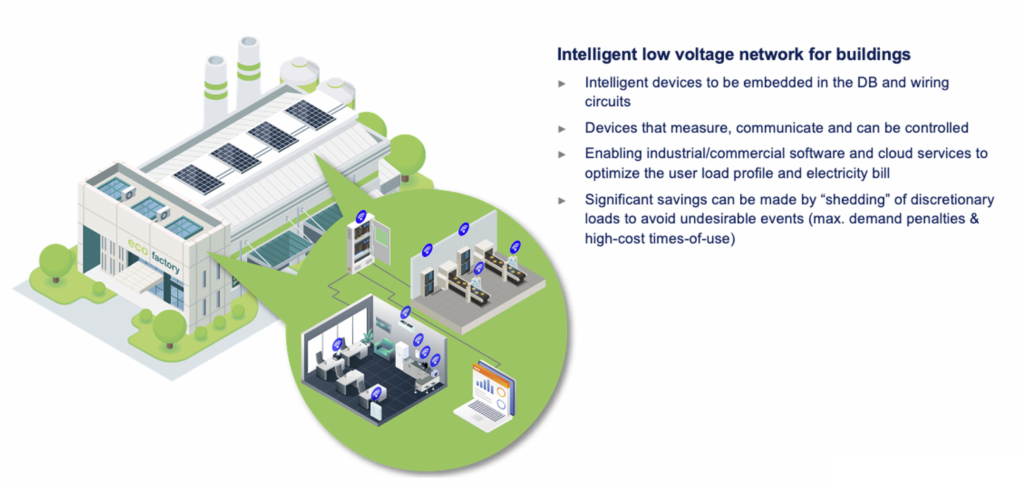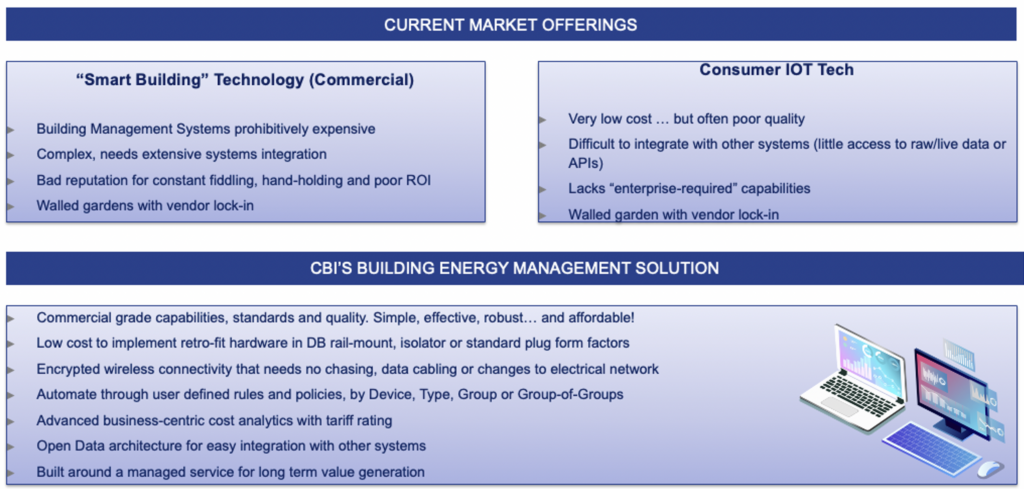The combination of alternative energy generation, energy storage, and automated load control and energy management, with the technology designed around enabling and empowering energy trading platforms, is what will change the world, how it uses energy, and how this impacts our planet, our lives, and our future as a species.
CBI has seen the future for energy, and has very quickly put in place new businesses that can make real, positive change in the world. We can become leaders in the global energy supply, energy management and energy trading market.
But there is a curious thing. It is astonishingly hard to get data on how energy is consumed. There are reams of data how it is generated, and who uses energy… but policymakers are really late to address the consumption side of the energy picture.
Knowing how energy is generated does not help reduce how much is consumed. There is a saying in our space … the cheapest watt of electricity to generate is the one you didn’t use.
So our focus at CBI:energy is on automated load management, and business-centric energy management.
You change how the world consumes energy by changing how it is used, not how it is supplied.
You’ve all seen the graph of general inflation vs energy inflation. About 15 years ago the tow lines diverged, it’s getting worse, not better.
The explosion in the cost of electricity is not just south Africa, you’ll see similar patterns all over the world. Our colleagues at CBI Inc in the US tell us of raging costs, and regular power failures. We only hear about the big ones, but globally the old model of a central state-run utility-supplied power is broken. Electricity has got expensive, and increasingly unreliable. New players are scrambling to sort it out.
Electricity used to be one of the minor business expenses, for most non-manufacturing companies, you held your nose and cut a cheque to Eskom. Now it’s become a massive business cost … for a midsize business of 200-300 staff, electricity costs R100-R150,000 per month straight off the bottom line, escalating double digit each year. A customer of ours runs 28 holiday resorts. Electricity is now 30% of their cost of business.
The benefits of granular consumption monitoring and automated load control are many …
Something as simple as turning the lights off.

One of CBI’s POC clients is an owner-run business of 250 people over four floors of an office building in Randburg. And every night the CEO goes around turning off aircons running full blast, and turning off lights. You can shout and nag, but people are people. They forget, they get careless. Automate, to reduce waste.
How about unnecessary loads that are using power during the most expensive time of the day? Your geyser can heat when it’s cheap. Your air conditioning can cool when it’s cheap. Automate, to reduce costs.
The customer I mentioned earlier spends around R110,00 per month on electricity. Of this R20-R30,000 every month is Maximum Demand penalties. CBI itself of its R24m electricity bill has around R2m per year in Max Demand Penalties. That’s simply money down the drain – if only you could do something about it.
Well… now you can.
Many companies are also totally unaware of how notified maximum demand works … they signed a contract with their utility ten or twenty years back, and never looked at it again.
And every month there’s a random chance that a whole lot of loads will come on at the same time, triggering a Max Demand penalty. One of our customers is paying R30,000 per month on NMD charges, a third of their total bill. Straight off the bottom line, totally preventable through automated load management.
Flattening the curve reduces direct energy costs, reduces unnecessary penalties… and optimises your solar generation. What’s not to love?
And there’s more. Regulatory compliance. Did you know that every commercial building over 2000m2 in South Africa must have an Energy Performance Certificate in hand by the end of the year? No? Well neither do the owners of almost all of the 160,000 buildings in the country. As of a month ago… how many had an EPC? Less than twenty. Out of 160,000.
An energy management system gives our customers all the data they need to be able to report on their efficiency initiatives, and get moving quickly with auditable Environmental Sustainability and Governance programmes. Not only report – but prove. Auditable data on before and after. Provable improvements.
We’ve talked about the why… now let’s talk about the what and the how.
In SA, about a quarter of all energy consumed is offices and residential. You can also add another 10-15% to this as official stats don’t pull out consumption of energy by the offices and supporting services of the “heavy industry” sector. While most energy consumption is heavy machines and production loads, but these companies have offices full of people. So something approaching 40% of all energy consumed is ”people” consumption, where there is a huge opportunity for easily bringing in efficiencies and reducing waste.
Taking base load of 60GW, if we can knock 10% off consumption through automated load management (easily done) we could reduce consumption by 2.5GW. That’s a Stage 2 load shedding event right there that no longer needs to happen.
Our Building Energy Management Solution has three core components…
Connected hardware, software platform, and service delivery systems.
I have some of our kit here with me… but our focus is on affordability, reliability and simplicity. One and three phase meters that are Class 1, four quadrant.
Controllers in three most useful form factors – DB rail mount, isolator and plug point. Put the load control where it is easiest to implement, with least disruption to the business. And our load controllers are also meters – 1% accuracy.
At tens of hundreds of points in your electrical network – points of supply and points of consumption you get minute-by-minute Power, Energy, Voltage, Current, Power factor.
This then feeds into our IOT platform to generate data, but also feed into rules and automations. And also feed into our analytics platform to generate business-centric reporting.
And behind this is the service delivery capability – our energy management solution is delivered as a Managed Service. We manage the end to end customer experience, from scoping the project to installation to commissioning and ongoing management.
Building Energy Management as a Service.
People in the business world don’t care much for technical detail – they want to boil it down into metrics that let them make impactful decisions, quickly.
Business owners need to:
• Automate control of their loads to reduce and manage consumption
• Have detailed visibility into WHAT loads are consuming, WHEN and WHY
• Turn electrical consumption telemetry into decision-ready business information
There is a lot of consumer kit already in the market – but it’s not suitable for Commercial & Industrial. Data management. Data aggregation. Forming Energy Communities based on common areas of interest – how much energy used per square metre of retail space? How does my office in Joburg compare to a similar office in Cape Town?
CBI has its Astute Smart products … this is a consumer product sold through our existing distribution and retail channels. We launched mid last year, and after a slow start while electrical contractors and homeowners got their heads around why they would want load control and energy management, we’ve seen fantastic growth – 20-25% growth every month over the last quarter.

For Commercial and industrial implementations you need to be able to deploy and manage an energy management solution centrally, to drive rules and automations through centrally-managed policies that can cascade down from an organisation to its sites.
You need quality equipment that meets or exceeds all the relevant standards for quality, accuracy and safety.
But, you say, there are C&I energy management solutions.
Well, yes. Sort of. There are many solutions that could fit this requirement … there is a huge and established BMS industry. But most buildings are not “smart” because BMSes are are too complex, too expensive, and a nightmare to retro-fit an existing building. Amongst other challenges.
CBI’s approach is not to create a “smart” building. We just want you to have a “smarter” building. It only needs to be smart enough to help you manage your costs, improve your efficiencies, run a better operation.
The new Building Energy Management solution from :energy is a great fit for what we conservatively estimate to be well north of 40,000 commercial customers — and what we believe could reduce South Africa’s energy consumption waste by at least two gigawatts — or what we have come to know as a Stage 2 Load-Shedding event.
